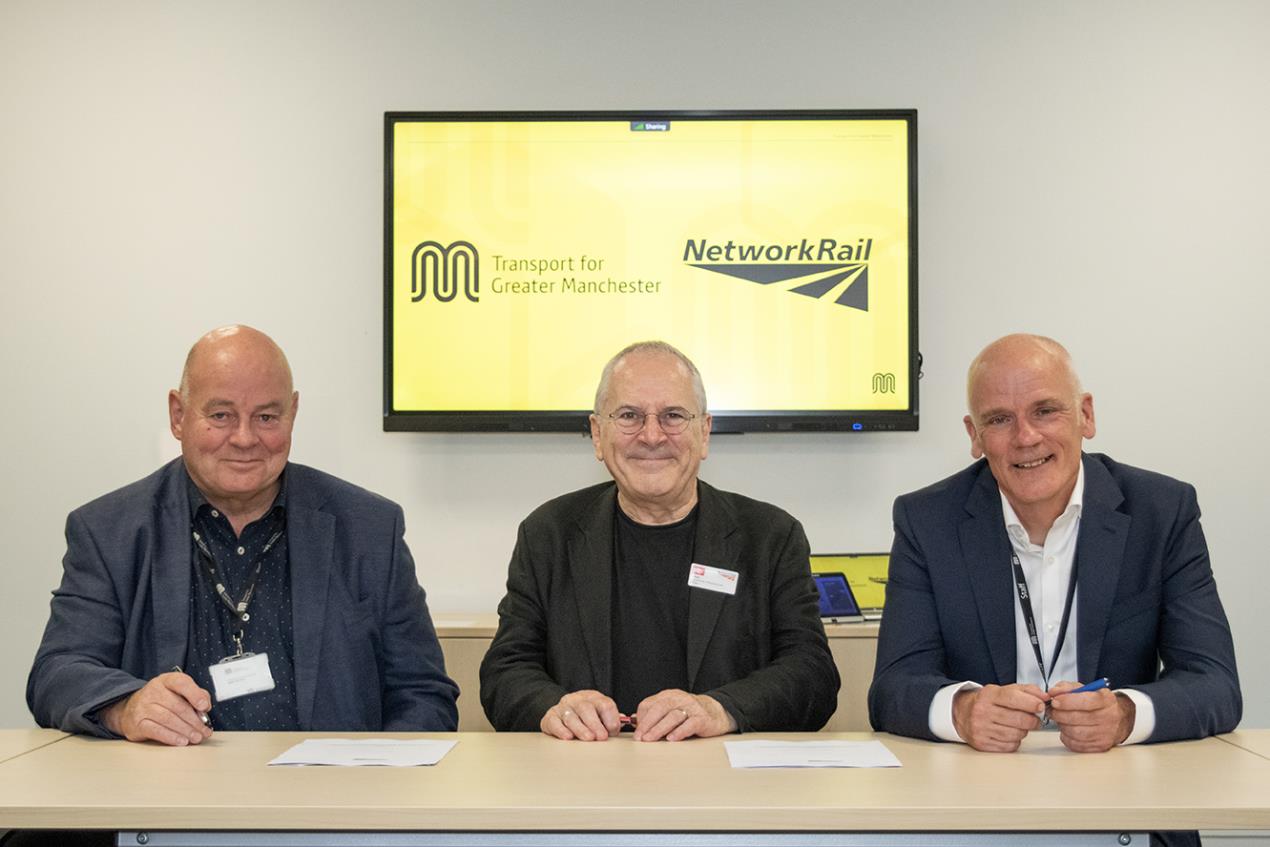 Network Rail and Transport for Greater Manchester (TfGM) signed a partnership to deliver a joint vision for Greater Manchester stations initially focusing on Manchester and Salford central railway stations.
Network Rail and Transport for Greater Manchester (TfGM) signed a partnership to deliver a joint vision for Greater Manchester stations initially focusing on Manchester and Salford central railway stations.
Over the next 12 months the two organisations will work with key stakeholders and future partners on proposals across six stations including Manchester Piccadilly, Manchester Victoria, Manchester Oxford Road, Deansgate, Salford Central and Salford Crescent.
The collaboration agreement, the first of its kind between the two organisations, is a major step forward in bringing together both land and infrastructure to create a better-connected Greater Manchester.
Network Rail and TfGM, working together with key stakeholders, will establish future regeneration opportunities at Greater Manchester stations and attract partners for delivery of future projects.
Manchester is the fastest growing metropolitan area in the UK. The total population of Greater Manchester is predicted to grow to around 2,950,000 by 2031, with the City of Manchester alone accounting for 36% of the growth.
Network Rail owns over 90 stations in Greater Manchester and more than 5.6 million journeys are made across TfGM’s transport network each day. The partnership will focus on transport upgrades and supporting regeneration that allow the two cities to meet the demands of future population growth and further support the regional economy.
Through the new Trailblazer Deal struck with government, there is a huge opportunity for Greater Manchester to deliver the Bee Network, its vision for a fully integrated public transport system, with ambition for full integration of local rail services by 2030. This partnership will play a part in helping with its future delivery.
As city centres are changing in a post-Covid landscape, rail stations provide significant opportunities for growth and regeneration by improving space to better connect them with the people and places they are designed to serve.
The two organisations, alongside future partners and supporters are committed to deliver passenger and communities an integrated transport system to attract customers and provide a service which encourages people to use public transport first and reduce reliance on cars.
All parties involved will contribute to the development of the areas around the stations securing additional funding and maximising commercial development opportunities which will increase the attractiveness of development opportunities by looking at them in a comprehensive way. The two organisations consider each station within the community, heritage, and cultural context to ensure wider social value is delivered. Creating a joined-up strategy for all the stations and an overarching vision which supports an integrated transport system. The last targets of the agreement supports the net zero carbon objective ensuring climate change and the journey to net zero is a key focus and is a priority for strategic decisions to support the stations, while providing increased access for all by improving accessibility for inside and around the stations and deliver ease of movement between the stations and the wider city.
Share on:



